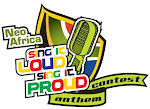THE SOUTH AFRICAN NATIONAL ANTHEM: DID YOU KNOW?
• The South African national anthem actually consists of two anthems: Nkosi Sikelel’ iAfrika (translated as God Bless Africa) and Die Stem van Suid-Afrika (in English, The Call of South Africa)
• Prior to South Africa’s transition to democracy in 1994, Die Stem was the official national anthem, and Nkosi Sikelel’ iAfrika the unofficial anthem
• Nkosi Sikelel’ iAfrika was a potent symbol of resistance to apartheid, and was the de facto anthem of the majority of South Africans
• In 1994, the two anthems were merged into the single anthem of the new, democratic South Africa
• The anthem contains five different languages: isiXhosa, isiZulu, seSotho, Afrikaans and English
• Nkosi Sikelel’ iAfrika was originally composed in 1897 as a hymn, by Methodist mission schoolteacher Enoch Sontonga
• Sontonga wrote the lyrics to the first stanza in isiXhosa, and seven more stanzas were later added by the poet Samuel Mqhayi
• A seSotho version of Nkosi Sikelel’ iAfrika was published in 1942 by Moses Mphahlele
• Nkosi Sikelel’ iAfrika became a popular church hymn, and was later sung as an anthem at political meetings, as an act of defiance against the authorities of the day
• There is no standard version or translation of Nkosi Sikelel’ iAfrika, and the lyrics may vary slightly depending on the place, language or occasion
• Die Stem was originally a poem, written by the celebrated Afrikaans poet CJ Langenhoven in 1918
• The music to Die Stem was composed in 1921 by the Rev ML de Villiers
• The public learned the anthem by way of the SA Broadcasting Corporation, which played both God Save the King and Die Stem at the end of daily radio broadcasts
• Die Stem was first sung publicly in Cape Town, at the official raising of the old orange, white and blue national flag on 31 May 1928
• However, it was not until 1957 that Die Stem was adopted as the official South African national anthem
• In 1962 the English version, The Call of South Africa, was officially adopted also




